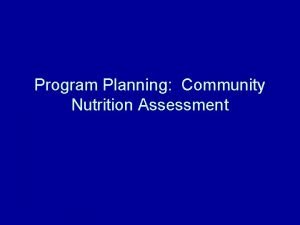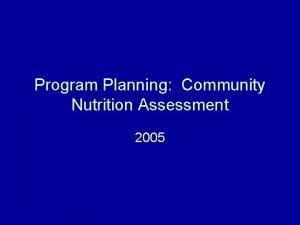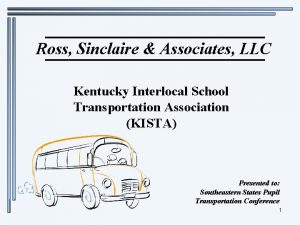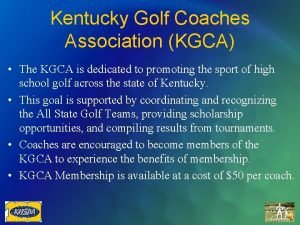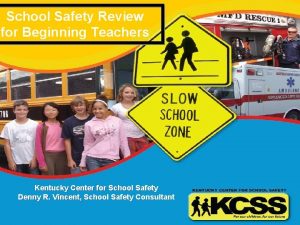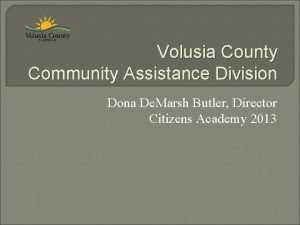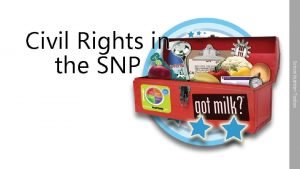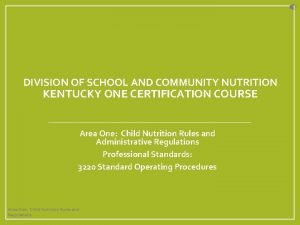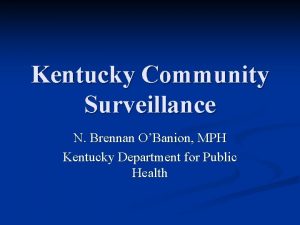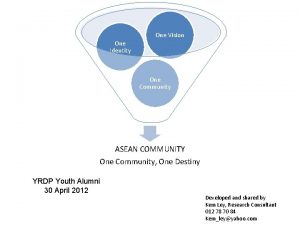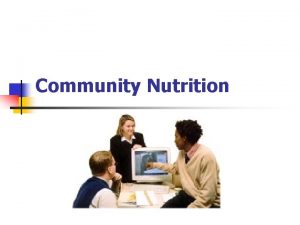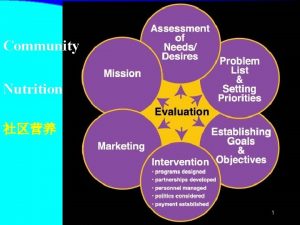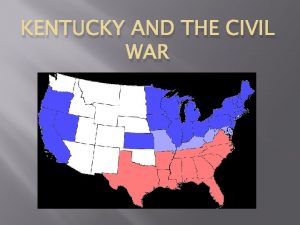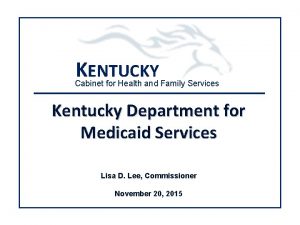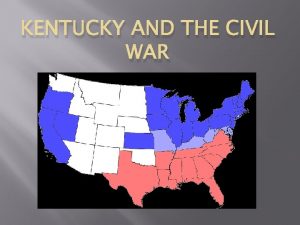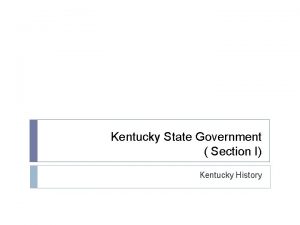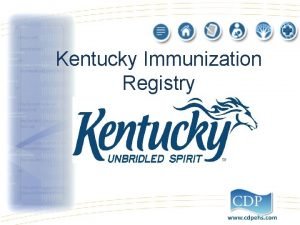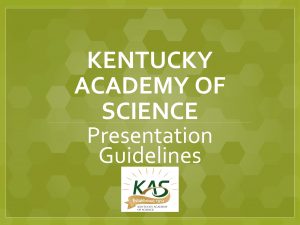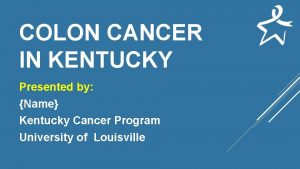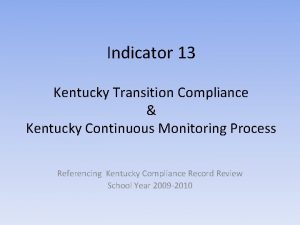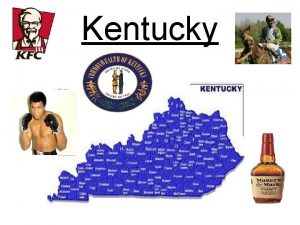DIVISION OF SCHOOL AND COMMUNITY NUTRITION KENTUCKY ONE


























- Slides: 26

DIVISION OF SCHOOL AND COMMUNITY NUTRITION KENTUCKY ONE CERTIFICATION COURSE Area Three: Safe Food Handling Practices, Sanitation, Workplace Safety and First Aid

Area Three: Safe Food Handling Practices, Sanitation, Workplace Safety and First Aid • At the end of this lesson, participants will be able to: 1. Identify safety hazards in the food service area. 2. Understand ways to prevent accidents from occurring. 3. Understand how to respond appropriately when safety issues arise.

Safety Hazards in the Child Nutrition Work Area Accidents are always waiting to happen. It is important to be mindful of hazards in your environment.

Common Categories of Kitchen Injuries Chemical Exposure Slips, Trips, & Falls Strains and Sprains Electric Shocks Choking Burns Cuts and Lacerations

Hazard: Slips, Trips, and Falls

Prevention: Slips, Trips, and Falls • Keep the Floors Clean • Keep the Floor Dry • Be Aware and Be Careful • Conduct daily inspections to identify hazard areas.

First Aid: Slips, Trips, and Falls Never move a fall victim. Call for help immediately.

Hazard: Strains & Sprains Bend properly to prevent strains and sprains. Always lift with your legs and not your back.

Prevention: Strains & Sprains

First Aid: Strains & Sprains If the injury involves the neck or back, do NOT move the injured person. Call for help immediately.

Hazard: Cuts & Lacerations Be aware and alert of the many hazards in the work area that could cause a cut or laceration injury.

Prevention: Cuts & Lacerations

First Aid: Cuts & Lacerations If an accident occurs, follow the steps for first aid. Remember to wear a glove over the injured hand.

Hazards: Fires & Burns There are many opportunities in the school cafeteria for fire and burn hazards.

Prevention: Fires & Burns

First Aid: Fires & Burns Stop, Drop, and Roll procedures are key if a coworker has clothing catch on fire. Place burn areas under cold, running water.

Hazard: Electric Shocks Be mindful of all the electrical hazards in your work area.

Prevention: Electric Shocks

First Aid: Electric Shocks Do NOT touch someone who is experiencing electrical shock. Call for help immediately.

Hazard: Chemical Exposure

Prevention: Chemical Exposure

First Aid: Chemical Exposure Call the Poison Control Center in case of chemical exposure. Keep the chemical container to provide accurate information to the control center operator.

Hazard and Prevention: Choking

First Aid: Choking

Today we have learned to: 1. Identify safety hazards in the food service area. 2. Understand ways to prevent accidents from occurring. 3. Understand how to respond appropriately when safety issues arise.

DIVISION OF SCHOOL AND COMMUNITY NUTRITION KENTUCKY DEPARTMENT OF EDUCATION
 One vision one identity one community
One vision one identity one community Graphic organizer with the aims of la liga filipina
Graphic organizer with the aims of la liga filipina Long division and short division
Long division and short division Short division
Short division Polynomial long division definition
Polynomial long division definition Long division of polynomials
Long division of polynomials Willow cabin speech
Willow cabin speech Give two piece of advice to avoid computer addiction
Give two piece of advice to avoid computer addiction Nutrition program planning
Nutrition program planning Community nutrition program planning
Community nutrition program planning Kentucky christadelphian bible school
Kentucky christadelphian bible school Kista bus sales
Kista bus sales Ky golf coaches association
Ky golf coaches association Nfhs volleyball score sheet instructions
Nfhs volleyball score sheet instructions Kentucky center for school safety
Kentucky center for school safety Deakin star timetable
Deakin star timetable One god one empire one religion
One god one empire one religion One one little dog run
One one little dog run One king one law one faith
One king one law one faith Byzantine definition
Byzantine definition One team one plan one goal
One team one plan one goal See one do one teach one
See one do one teach one See one, do one, teach one
See one, do one, teach one Studiendekanat uni bonn
Studiendekanat uni bonn Volusia county community assistance division
Volusia county community assistance division One-step multiplication equations
One-step multiplication equations School nutrition toolbox
School nutrition toolbox








